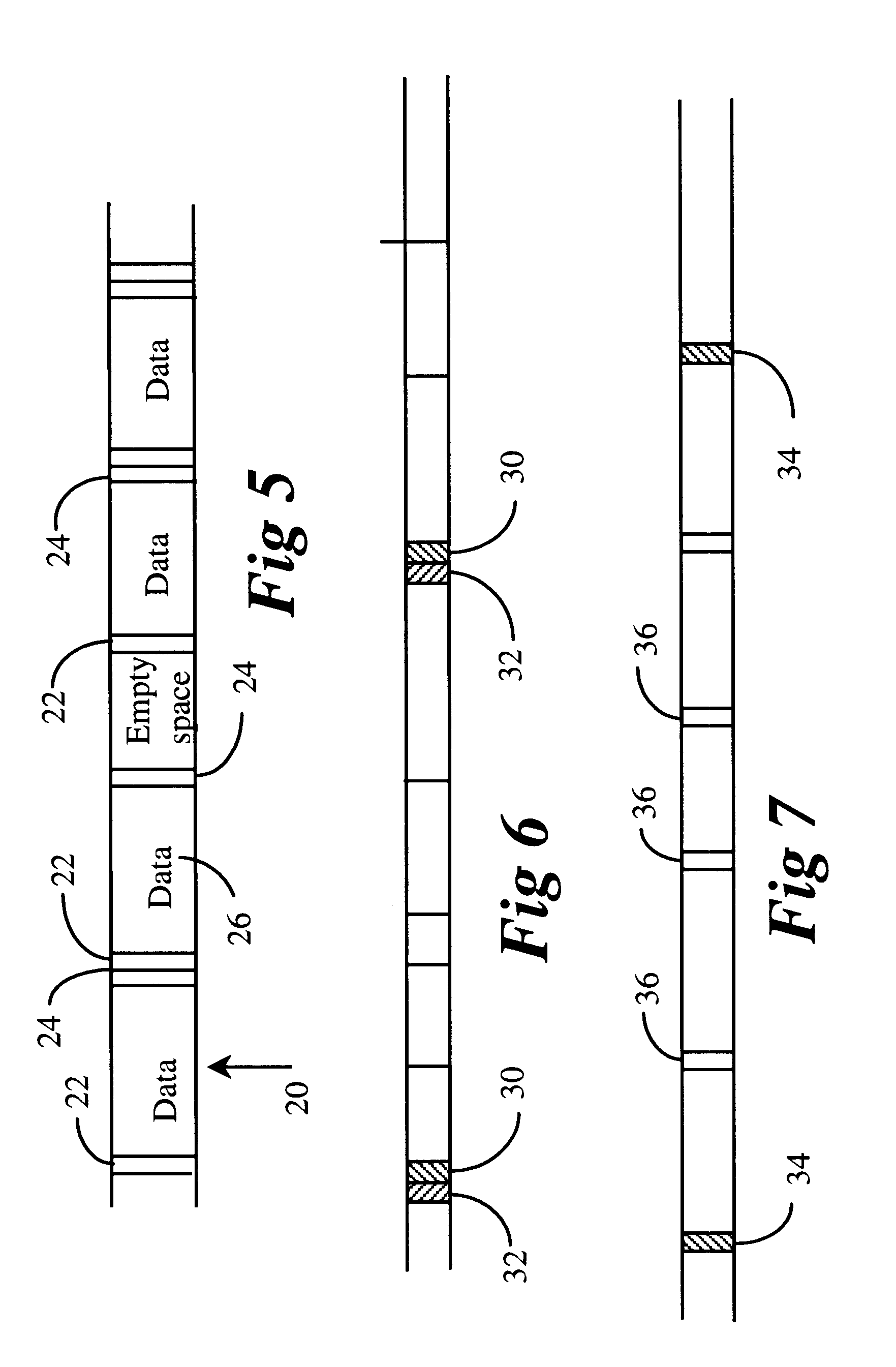Programmable transport and network architecture
a network architecture and programmable transport technology, applied in data switching networks, time-division multiplexing selection, digital transmission, etc., can solve the problems of inability of the network to provide service diversity, inability to fully utilize transport facilities, and inability to fully utilize network resources
- Summary
- Abstract
- Description
- Claims
- Application Information
AI Technical Summary
Benefits of technology
Problems solved by technology
Method used
Image
Examples
Embodiment Construction
FIG. 4 shows a basic configuration of a transport network according to the invention. Referring to the Figure, in the network 10, data is exchanged among nodes 12, e.g., five nodes, in fully meshed connectivity. The transport media in this description are rings and they are, in particular though not limited to, fiber optic rings. As mentioned earlier, the domain is a digital facility with a defined bit rate consisting of a continuous series of digital data units and there can be more than one domain on the same level or different levels of hierarchy. The data units can be any arbitrary preset unit, e.g., a byte, and data is transferred in containers of any desired number of data units. Each node in the network is a simple container packing and unpacking device. Each node is assigned a number of containers to carry its data to other nodes in the ring. The set of containers available to all nodes may form a frame. The frame size is arbitrary and is governed by granularity or data-dela...
PUM
 Login to View More
Login to View More Abstract
Description
Claims
Application Information
 Login to View More
Login to View More - R&D
- Intellectual Property
- Life Sciences
- Materials
- Tech Scout
- Unparalleled Data Quality
- Higher Quality Content
- 60% Fewer Hallucinations
Browse by: Latest US Patents, China's latest patents, Technical Efficacy Thesaurus, Application Domain, Technology Topic, Popular Technical Reports.
© 2025 PatSnap. All rights reserved.Legal|Privacy policy|Modern Slavery Act Transparency Statement|Sitemap|About US| Contact US: help@patsnap.com



